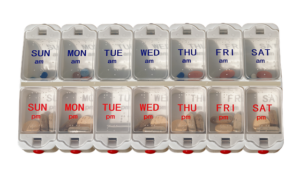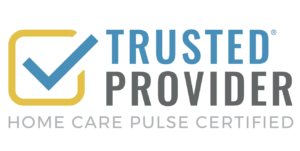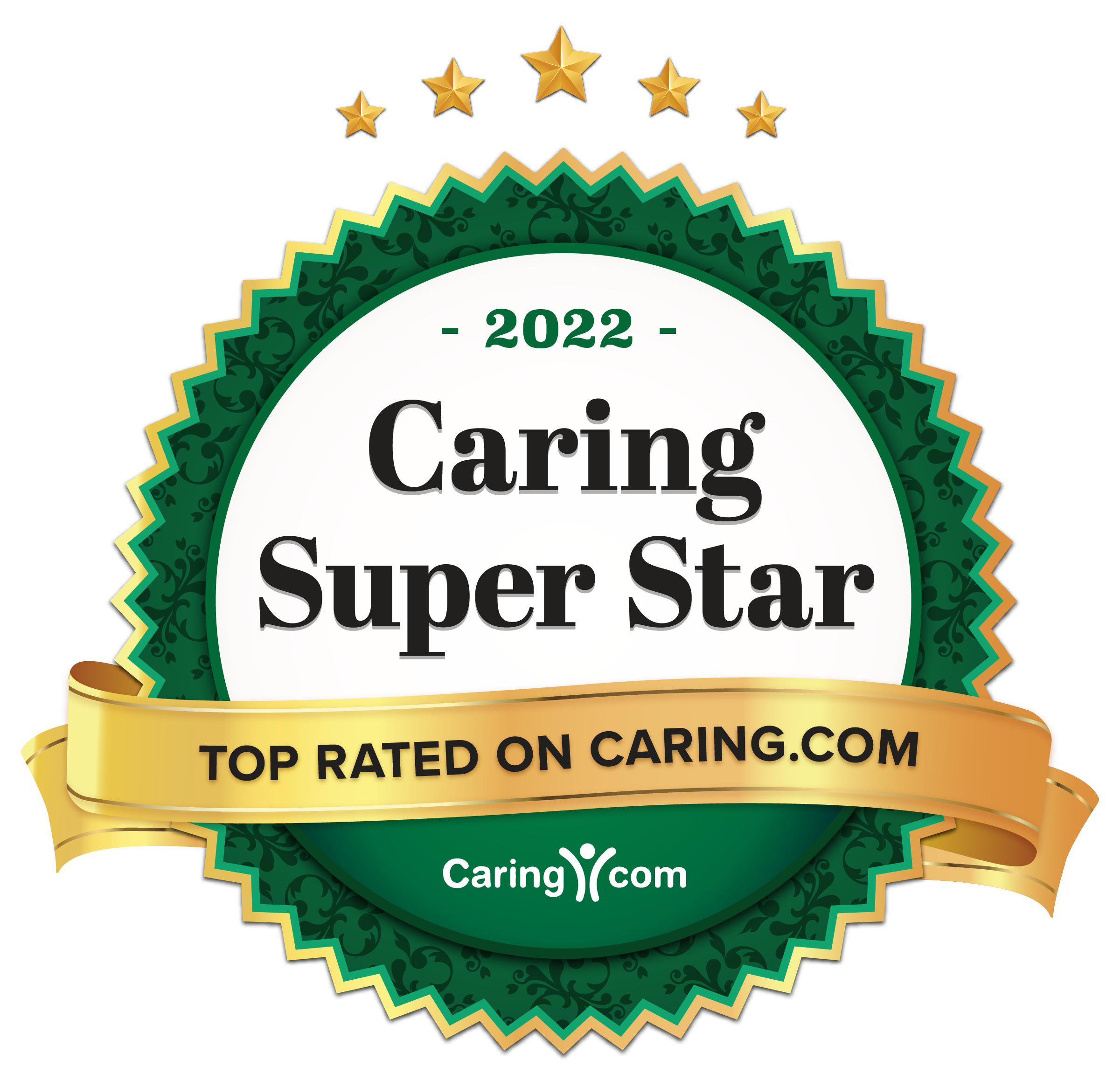Slowing down as you get older may feel like a natural part of aging, however, chronic fatigue and dissipating energy levels shouldn’t be ignored. If you or someone you care for is feeling more and more tired each day and simply wiped out, you won’t want to miss this guide on recognizing fatigue in older adults and what to do about it:
Common Causes of Fatigue

Photo courtesy of Pixabay (Mohamed_hassan)
You might be surprised to learn that it’s more than physical exhaustion that can lead a senior to feel fatigued and lacking energy. Common causes of fatigue in older adults may include:
-
Medication side effects – medicines that are commonly taken for things like allergies, pain, nausea, and depression can have side effects that make you tired, zap your energy levels, and even contribute to brain fog.
-
Stress, anxiety, and depression – emotional stress that comes with things like grief over the loss of a loved one, difficulty hearing, financial woes, and loss of independence can manifest in very physical ways including fatigue and diminished energy.
-
Sleep deprivation – lack of sleep has been linked to everything from bad moods and fatigue to increased risk for Alzheimer’s. The National Sleep Foundation recommends that adults over 65 get 7 to 8 hours of sleep a night.
-
Poor diet – malnutrition, or not getting adequate nutrients in your diet, can be a source of fatigue, weakness, and even increase your susceptibility to getting sick. For example, anemia (low iron) can definitely exacerbate feelings of tiredness. At the same time, consuming lots of food that is primarily “junk” or fatty, processed, fried foods can do the same thing.
-
Medical treatments and surgery – common treatments, like chemotherapy and radiation used to treat cancer, can cause severe fatigue as can recovering from a major surgery like a knee or hip replacement.
-
Alcohol consumption – 2.5 million older adults in the U.S. have an alcohol or drug abuse problem and both contribute to not just poor health but chronic fatigue as well. Alcohol especially can interact with medication you may be taking, inhibit proper nutrient absorption from the food you eat, and change your behavior and thinking skills.
-
Boredom – is your day lacking the pep and vigor it once had when you were working or more mobile? Waking to a long day ahead that has little planned or scheduled can make you feel lackluster and tired.
-
Dehydration – dehydration continues to be a leading cause of hospitalization in adults over 65 and symptoms can often be confused with fatigue. Disorientation, low energy levels, and brain fog might actually be an indication that your body is low on fluids.
Does Low Blood Pressure Cause Fatigue?

Photo courtesy of Pixabay (Gadini)
In short, not really. A sudden and severe blood pressure drop can definitely foster symptoms of dizziness, lightheadedness, fatigue, and fainting. However, chronically low blood pressure will not be the sole source of your fatigue. Sometimes a medication you are taking for low blood pressure can cause fatigue (like some beta-blockers), however, if you are experiencing chronically low blood pressure, you should talk to your doctor right away.
In addition to treating you for low blood pressure by adjusting medications or modifying your diet, your doctor may also encourage you to practice accurate blood pressure monitoring at home with an easy-to-use digital blood pressure monitor that records readings and alerts you to high and low spikes – check out this helpful list. A sudden drop in blood pressure can be life-threatening so if you or someone you care for has one, get to a hospital as soon as possible.
Tips for Preventing Fatigue
Avoid long naps and late-day caffeine fixes – keep your afternoon naps to 30 minutes or less and avoid drinking caffeine after lunchtime. This can not only help you fall asleep faster come bedtime but improve the quality of your sleep too so you wake rested and energized.
Address bad habits – quitting smoking is practically the best thing you can do for your health in general, no matter your age or health status. But, it can also fight fatigue by lowering your risk for tiresome lifestyle conditions like breathing problems and heart disease. Cutting excessive alcohol consumption can do the same thing.

Photo courtesy of Pixabay (MabelAmber)1
Exercise regularly – it might seem like ‘rest’ should be on order if you are feeling fatigued, however, it’s the opposite that is true. Routine exercise helps to increase your appetite and improve your sleep as well as make you stronger, more flexible, and well, happier – all things that can bolster energy levels.
Keep a daily journal – recognizing patterns of fatigue will most aptly help you and the person you care for address them. Note diet, exercise, and nightly sleep habits as well as the times of day when you feel most fatigued and then start a conversation with your doctor to address it.
Holidays tend to add a higher level of confusion and stress for those experiencing a decline in cognition. A change in routine and busy gatherings can be overwhelming and confusing for your loved one. Long-term caregiver, Betty De Filippis, gives her tips regarding her experiences with her mother-in-law, Joan, who was diagnosed with Alzheimer’s Disease in 2013.
As the disease progressed through four years of caregiving, Betty learned many different techniques that aided — or hindered — Joan’s care. She learned how to help Joan more fully enjoy the holiday season with loving advice from friends, neighbors, and her family physician.
Let others know what is going on
“One of the first things that comes to my mind is to not be afraid to tell people what is going on. Explain why they are noticing a change in your loved one’s behaviors, so they understand how to better help or respond. I actually announced it one night at a church gathering of our friends and neighbors. It was so amazing how many people came to me later to offer their advice on how they handled similar experiences.”
Remember, it’s not only your loved one who will be experiencing change. Family from out of town, or those who may not see your loved one often, may be in for a shock when they see changes. Be straightforward and help them learn what may be helpful or not helpful. A family email before a get-together would be a great way to share some information and update your family regarding any changes they may experience.
Keep your expectations realistic and go with the flow

Photo courtesy of Pixabay (Beesmurf)
Events or tasks that may have once been easy and enjoyable for your loved one tend to change when they begin to experience a decline in cognition. You may need to change plans due to your loved one’s struggles. Just slow things down and make sure they feel comfortable and included. Read their body language and give gentle cues to help them if they seem to be struggling.
“Some people at a more advanced stage of dementia may experience ‘realities’ that are not actually happening (hallucinations or delusions). Instead of trying to convince them what is real, ask them about the reality they are experiencing,” says Betty. “If they ask questions, answer them honestly, but if they disagree, it will be ok if you just go with it. Help them do what they forgot how to do; if they want to do it another way, go with it. It shows caring and doesn’t embarrass them or confuse them further, which could cause them to feel frustrated and act out.”
Be respectful, patient, and kind
“This is probably the best advice I ever received from our family physician, while he quite literally let me cry on his shoulder,” says Betty. Remember that at whatever stage of memory loss your loved one is experiencing, they are not acting out or being difficult on purpose. “This is not something they are doing to irritate others, they are not just being ornery. This is something that is happening to them. If it is hard and frustrating for us, think how much more difficult it is for them.”
Holidays are meant to be a time to cherish with loved ones. Although your loved one may be “different” than you’re used to, they are still the person they used to be — they are just dealing with a difficult disease. They are doing the best they can in a situation that may be too overwhelming for them to handle. In some cases, they may not even understand what it is you’re gathered to celebrate or why there are so many people there. Check in with them often, read their body language, and respond accordingly. Most importantly, remember to be patient, be kind, and enjoy your time together.
See Part Two Here
Seniors don’t often call saying they need in-home care. Many times they don’t realize they need additional help, and often they don’t even know it’s available. Usually one of their children seeks services because they’ve been helping their senior loved one and have noticed their needs have grown. Other times these adult children live out of town and come for a visit and are surprised by a few things going on in their parent’s home.
So, what are the signs that your elderly loved one might need some assistance at home? Here are the top signs we see:
1. The house is no longer clean and organized like it used to be.
Common household chores can become overwhelming and tiresome. The vacuum becomes heavy and a pain to use for many aging seniors. Sometimes their eyes don’t see the dust and dirt like they used to. Other times your aging parents just don’t have the energy to keep up with the cleaning.
2. You notice that medications are not being taken as they should.

Photo courtesy of Pixabay (27707)
They say that one out of every two seniors over 80 has some type of dementia or memory loss. Even without dementia, it can be hard to remember to take your medications day in and day out, especially if someone is not filling pill boxes every week. Days blend with other days and important medications get missed.
3. The fridge has minimal or spoiled food and the freezer has a lot of frozen foods.
Many times seniors start turning to easily prepared foods and frozen dinners. I remember one family whose parents were surviving mostly on granola bars and popcorn. It was a sad situation for several months before the family found out and hired a personal care agency to help prepare some hot nutritious meals. Preparing, cooking, and cleaning up all take energy and willpower and many seniors begin lacking both over time.
4. Your aging parents are having a more difficult time getting around the house.
Joints get painful and muscles start atrophying with many seniors as they sit more and move less. Some begin to stumble and fall, which of course can be very dangerous. We always say, “One fall can change it all!” because we’ve seen it so many times. It’s best to remove any fall hazards in the home, especially loose rugs and items that block pathways. Look at getting a cane or walker to help stabilize your parents as they walk and be sure that all ice is cleared from walkways during the winter months.
5. Your loved one is coming home from the hospital or rehab after a major fall or illness. 
The saddest scenario is when an elderly parent comes home after dealing with a hospital stay and they are too weak to get around on their own. Both the kitchen and bathrooms can be especially difficult to navigate while trying to recover. There are so many hard surfaces, slick floors, and sharp edges in a bathroom and kitchen, so one fall can easily result in bad bruises and/or broken bones.
Hiring a personal care agency can make all the difference.
Changes to seniors can be hard to notice, especially if you see them every day or so. Family coming in from out of town usually notice certain changes right away, whether it’s a change in cognition or memory loss or just the cleanliness of the home. Asking for extra help blesses your loved one and you. If you are the primary caregiver, it’s important to recognize if you’ve been feeling worn down and overworked as this is a good indication you may need more help as well.
A personal care agency can make all the difference during these sometimes difficult transitions. It’s always better to seek help before the crisis hits. Although that’s easier to say than do, we encourage families to get a little extra help going as soon as possible. Then, when a lot more help is needed, your aging parent will already feel comfortable having more assistance in their home.
Contributed by Gary Staples, Owner of Aspen Senior Care
While any wartime veteran or their surviving spouse can apply for the VA Aid and Attendance Benefit through the help of a veteran service officer or a VA Accredited Attorney, the paperwork is lengthy, and the time spent preparing the paperwork can seem arduous. American Patriot Service Corp, using their in-house attorney, has developed a system creating a quick turnaround time, shortening the time it takes to prepare the paperwork for filing.
American Patriot Service Corp has been helping wartime veterans and their families receive their hard-earned benefits for 7 years. During that time APSC has helped over 3,500 families receive over $100 million in the VA Aid & Attendance Benefit.
Legally, anyone preparing the paperwork for the VA Aid & Attendance Benefit cannot charge a fee. American Patriot Service Corp works on a unique Pay-It-Forward model. As Rick Nelson, CEO of American Patriot Service Corp puts it, “A previous veteran and their family got us to the point where we can help you, we only ask that you pay-it-forward and help the next veteran.” A suggested donation of $250 essentially covers the costs of preparing the paperwork.
There are three primary qualifications which must be met for the Veteran or a Veteran’s Surviving Spouse to receive the Aid & Attendance Benefit.
- The Vet must have served during a time of war.
- The VA requires the Vet or the Surviving Spouse to receive at least two of the activities of daily living or ADL’s which include:
- Bathing/Showering
- Assisting with Hygiene
- Dressing
- Toileting
- Ambulation
- Nursing Services
- Physical/Mental Therapy
- Some income and net worth restrictions exist
An M.D. must examine the Claimant and certify they meet the medical conditions necessary to qualify for the benefit.
The VA Aid Attendance Benefit pays the Claimant (Veteran or Surviving Spouse) a monthly pension that can be used for paying both in-home caregivers, as well as assisted living and nursing facilities. Family members taking care of the Claimant can qualify as a caregiver and be paid for the care they provide with some restrictions.
Current monthly pension amounts of the VA Aid and Attendance Benefit
- Veteran $1,830
- Surviving Spouse $1,176
- Veteran and Spouse $2,170
Rick Nelson and his staff are passionate about helping our country’s wartime veterans and their surviving spouses receive the hard-fought benefits they deserve.
Visit the APSC webpage at www.apscnp.org or on Facebook www.facebook.com/apscnp
Contributed by APSC Membership Department
We Serve You “Because You Served U.S.”
A safe home is the number one requirement for aging-in-place. Without a home that’s adapted to your needs, you’re one slip and fall away from moving to an assisted living facility. Before you start calling up contractors to remodel your house, this is what you need to consider when creating an aging-friendly home.
Remodeling for Accessibility
Remodeling in your senior years requires a different approach. No longer are aesthetics the focus; instead, it’s all about creating a home that’s safe, comfortable, and easy to live in. However, by planning ahead instead of waiting until your health demands it, you can incorporate accessibility features that are as stylish as they are functional. Here are some aging-in-place projects to put on your list:
- Constructing a ramp: Entry stairs pose a significant fall risk, especially when carrying items into the house. Ensure you can enter and exit your home safely by creating at least one step-free entrance. If your current entrances all have stairs, that means building a ramp to guide you indoors.
- Installing grab bars: Falls in the bathroom cause serious injuries. According to Today’s Caregiver, 30 percent of seniors injured in a bathroom fall fracture a bone. While grab bars aren’t known for their beauty, they’re an important component of bathroom safety. Install grab bars at the shower and toilet, and opt for designs that double as towel racks, toilet paper holders, and other bathroom mainstays to avoid an institutional feel.
- Replacing flooring: In your senior years, you want flooring that’s both slip-resistant and soft underfoot. Replace tile in the kitchen with cork, wood, or linoleum, add slip-resistant vinyl in the bathroom, and swap shaggy carpet with a low-pile alternative.
- Adding lighting: Age-related vision changes make it difficult to see in dimly-lit spaces. Installing brighter overhead lighting and adding task lighting in busy areas compensates for poor vision so you can navigate your home safely.
Scheduling Projects

Photo courtesy of Pixabay (annca)
Unless you’re heading to a vacation home for half the year, it’s not practical to tackle all these home modifications at once. Remodeling will leave portions of your home unusable for weeks at a time, so it’s important to schedule projects carefully if you plan to live in your home through the remodeling.
Schedule remodeling projects to limit the intrusion on your daily life. That means no kitchen remodeling around the holidays and only doing one bathroom at a time. It also means spacing projects out so if one takes longer than expected, it doesn’t interfere with the start of the next project. Time off between remodeling projects also gives you breaks so you don’t go crazy waking up to construction sounds every day.
Research different projects to discover estimated time to completion, then decide when you’d like the project to occur. Perhaps you’ll schedule the kitchen during summer when you can grill on the patio, or the bathroom in spring after your holiday guests are gone. Keep projects on schedule by knowing exactly what you want before hiring a contractor. According to Consumer Reports, homeowners’ changing their minds is the biggest reason renovations take longer than expected.
Buying a New Home
Sometimes, remodeling your home for accessibility isn’t financially feasible. If your house would need extensive updates, especially if it requires costly additions like home elevators, you may be better off purchasing a new home. The median listing price for a home in Orem, UT, is $348,000, including accessible homes. However, seniors searching for smaller homes can save money without compromising style and comfort. To maximize your options, expand your search to include apartments and townhomes in addition to single-family residences. Many older adults discover they love living in multi-family buildings because of the proximity to neighbors, public transportation, and local amenities. No matter what type of home you’re looking for, review the local listings to get a feel for what’s available and how much it costs.
The decision to remodel your home or purchase a downsized dwelling is a highly personal one. However, you shouldn’t let emotions get in the way of safety. By making the choice that maximizes your safety at home, you make it possible to stay independent as you age.
Contributed by Lydia Chan. Lydia is the co-creator of Alzheimerscaregiver.net, a website that aims to provide tips and resources to help caregivers. Her mom was diagnosed with Alzheimer’s and Lydia found herself struggling to balance the responsibilities of caregiving and her own life. She is passionate about sharing her knowledge and experiences with caregivers and seniors. In her spare time, Lydia finds joy in writing articles about a range of caregiving topics.
Although a stroke is the fifth leading cause of death in the US, very few people understand how to recognize the signs and symptoms. Some risk factors such as such as age, race, and heredity can’t be changed. However, with the right knowledge, risk factors can be addressed and 80% of strokes can be prevented.
Types of stroke
A stroke occurs when the brain’s blood supply is severely reduced or completely stopped. This causes brain cells to become damaged or die due to lack of oxygen. Because the brain becomes severely damaged without oxygen, it is important to act quickly. A stroke can cause long-term damage, disability, and even death.
Here are the different types of strokes:
Ischemic Stroke – This type of stroke occurs when a fatty plaque clot or mass clogs a blood vessel and stops blood flow to brain cells.
Hemorrhagic Stroke – This type of stroke occurs when a damaged or weakened vessel ruptures and bleeds out into the surrounding brain tissue. The blood gathers and forms a bruise which compresses the brain cells and causes them to die.
TIA (Transient Ischemic Attack) – A TIA is a medical emergency. It is referred to as a “mini stroke” and mimics the symptoms of a stroke. It is caused by a temporary clot and does not cause permanent damage to the brain. However, about 15% of all strokes happen after a TIA occurs.

How to spot a stroke
Symptoms of a stroke are reflected in the areas of the body controlled by the damaged brain cells. Remember to act F.A.S.T to reduce the damage caused by a stroke.

Courtesy of StrokeAssociation.org
Learn to manage the risk factors
Although not all risk factors are preventable, there are many that can be addressed to minimize the possibility of experiencing a stroke. Along with monitoring your overall health, visit a physician to do a yearly health exam.
- Manage high blood pressure – HBP is the leading cause of strokes and is highly controllable.
- Control cholesterol
- Eat a healthy diet
- Be active and maintain a healthy weight
- Manage diabetes and control blood sugar
- Do not smoke
How can you find the fun in caregiving? It’s common to focus on certain aspects of your loved one’s care (safety, medications, finances, medical treatment, nutrition, etc.) Often you busy yourself with monitoring their progress (or decline) and doing everything in your power to keep them comfortable. Worrying about their reduced energy level, increasing fatigue, physical weakness and changing mental status is important. But it’s also important – for you both – to just have fun! Here are a few ways to laugh and live in the moment as you find the fun in caregiving together!
Fun in the home
You don’t have to go out to have fun. Activities are available in the home to enjoy. Keep favorite games handy. Whether a deck of cards, a jigsaw puzzle or a scrabble board, provide access to games that you can enjoy playing together. Try to set aside time to share some of these activities with him or her a couple of times a week, or set up get-togethers with his or her friends if possible. Set aside at least a day a week to watch a special movie together and make an “event” of it with popcorn and beverages.
Small outings
Seniors look forward to getting out, but as they age, they may no longer have the stamina or mobility for all-day trips. Still, they may be able to go out for an hour or two at a time. These can be outings that might seem every day to you: a trip to the supermarket or some local stores to window-shop. Adopt the old-fashioned concept of a “Sunday drive” through scenic areas or attractive neighborhoods that can culminate in a stop for a treat or a bite to eat. What does your loved one enjoy doing? If a gardener, take her to a local nursery or flower shop. How about to a bookstore or the local library for an avid reader? A local matinee is a great idea for a movie buff. A morning at the Farmer’s Market can be very enjoyable for those who love being outdoors and enjoying great food. All of these outings can be done in a couple of hours and provide your loved one with stimulation, a change of pace, and create enjoyable memories for you both.
Getting involved in the community
If your loved one is home-bound and has limited access to the stimulation of company beyond family members, consider finding community-based activities that he or she can enjoy on a regular basis. Most communities have senior centers that offer regular classes on topics of interest to him or her that generally only meet an hour or two at a time. This can offer an outing your loved one can look forward to weekly and allow them to make new friendships at the same time. There may be other community activities hosted through local churches and town-sponsored events that offer new opportunities for fun and socializing.
Music

Photo by Pixabay (Beesmurf)
If your loved one is musical, play their favorite music or plan a karaoke night with their favorite songs. According to the Alzheimer’s Foundation of America, when used appropriately, music can: alter mood, manage self-induced agitation, stimulate positive interactions, encourage cognitive function, and coordinate motor movements.
Projects
Set up projects at home that you might enjoy doing together. Find old photos or photo albums and help them create new scrapbook pages full of memories (or create them online!) Gardening, quilting, knitting, drawing or painting are other great options!
Talk about it
These are just a few suggestions for activities that can bring more fun to both you and your loved one’s life. So break out of your routine and discuss what you both might enjoy doing together that will bring joy and fond memories to you both!























 Caring Super Star of 2022
Caring Super Star of 2022 Daily Herald Best of Utah Valley, 2022
Daily Herald Best of Utah Valley, 2022 Utah Valley Chamber of Commerce Business of the Year
Utah Valley Chamber of Commerce Business of the Year